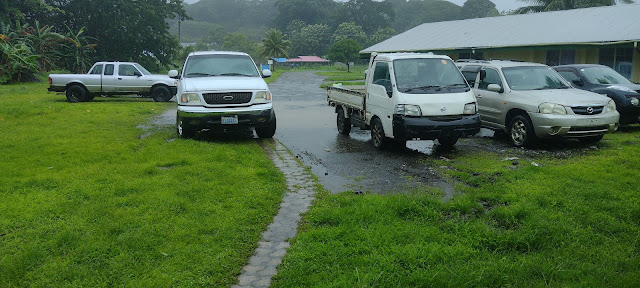Colors of light
Heavy morning rain knocked out Kacifica satellite connectivity for the campus.
Elise
After the video I had the students view the visible spectrum using a CD spectrograph.
In experimenting here, I found that I could deliver a spectrum off of the top half of the CD disk while blocking the direct reflection of the opening with a piece of sandpaper. This worked surprisingly well.
The dark band in the green is actually perceived to occur in the yellow by the human eye and could be a sodium absorption dark band effect - perhaps.
I asked the students to name the colors that they are seeing. The students said they saw red, orange, yellow, green, blue and purple. I asked whether there was another color between blue and purple in the box and no one saw a color that was not bluish-purple between blue and purple. I asked about the colors of the rainbow and a student who had taught eighth grade noted that he had taught the students "ROY G BIV" - that these were the colors of the rainbow. That the rainbow has seven colors is taken as a fact, even though this is contradicted by what they have seen in the sky and what they saw in the spectrum box. Never let an observed fact stand in the way of a memorized belief.
After covering the rainbow I showed the students the Himawari satellite feed site and that a number of the bands available referenced "RGB" - red, green, and blue. Two of the students are working with the weather service here on Kosrae.
Himawari-8 heavy rainfall potential areas included Kosrae this morning
Renee-Ann-Seshrue finds the #F0F is magenta
CharlynRose found that #F90 is orange
I did cover Loomatix' Color Grab for Android as a tool for capturing and conveying color information. This is of relevance to sewing "uniforms" here on Kosrae - shared church wear.
















Comments
Post a Comment